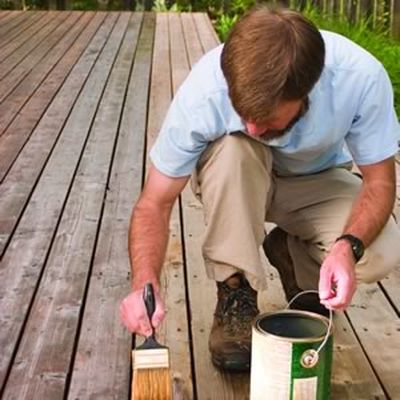Green it Yourself
Going green doesn’t have to cost a lot of green

When it comes to do-it-yourself projects, the only green most people think about is how much money they will fork over for tools and materials. But choosing eco-friendly, or green, materials for DIY projects can save more green in the long run. The problem, sustainability experts say, is seeing beyond the initial price tag.
“Some ways to go green include conserving water and energy, therefore even if some efforts seem more expensive up front, in the long run, they can save you money,” says Anca Novacovici, founder and president of Eco-Coach, Inc., a consulting company based in Washington, D.C. For example, Novacovici says, adding native plants to your yard will require less watering, thereby cutting down on water consumption.
“The best thing to do is to go to your local garden store and talk to them about what plants are native,” says Tony Napolitano, publisher of “Smart Homeowner” magazine.
“There are two benefits to this. First, you use less fertilizer and less water. And the second is the issue of non-native species getting in the way and damaging other species.”
Depending on your climate, choosing to plant a deciduous tree in the south (or west) part of the house can also save on air conditioning bills in the summer, Novacovici says. If you want to install lighting for walkways, consider solar-powered light kits.
“Solar panels capture the sun’s light and convert it to electricity, which is then stored in batteries, to be used at a later time,” Novacovici says. “The system works in most parts of the country, is easy to install, and does not cost anything to operate daily. In addition, it is a great alternative for out-of-the-way places and is immune to blackouts. Depending on the light, some will stay on all night, and others can sense motion. A porch light can run about $25-50, a garden path light will range from $30 to upward of $100 and one with a motion sensor starts at about $30.”
Another way to save green by going green? Painting. Bill Steen, one of the directors of the Canelo Project in Canelo, Ariz., says when it comes to little touch-ups inside the garage, in a sunroom or under a covered patio (not for rainy areas), try making paint from flour and white clay bought at a local ceramic or pottery shop. Add some pigments from a local art store, then mix it with water and traditional fillers like powdered limestone, silica or chalk.
“The advantage is it’s costing you less than a dollar a gallon compared to the $30 plus natural paint you are going to buy,” Steen says. “The materials couldn’t be healthier, or non toxic.”
For DIY deck projects, Anna Rosemann of Eco Consulting LA in Brentwood, Calif., suggests “building a patio or deck or any other exterior structure with certified wood rather than standard lumber and finishing it with no-VOC stains. Or using engineered lumber that is made from recycled plastic.” When it comes to going green, the biggest mistake do-it-yourselfers may make is not doing their research.
“There are a lot of companies that are claiming that their products are ‘natural’ or made of recycled materials,” Novacovici says. “However, because there are no agreed-upon standards of what this means, and because companies have found that they can attract new clients and increase their sales by making ‘green’ claims, many companies are making these claims if even a small part of their product/process could be considered green. This is known as ‘green washing’ and has increasingly become a problem. Be sure to double-check claims made by companies, and ask questions if some claims are vague or unclear.”